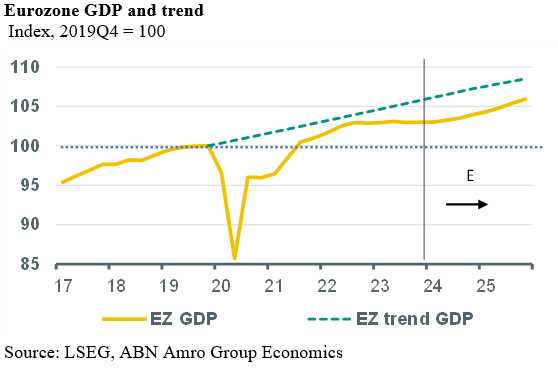Eurozone GDP still stagnating


Eurozone GDP growth came in at 0.0% qoq in 2023Q4, which was stronger than the consensus and our own expectation of moderate contraction. Looking forward, we expect GDP to continue to stagnate in 2024Q1 and we see growth picking up somewhat during the rest of the year, but remaining below the trend rate.
Eurozone economy still stagnating
Eurozone GDP growth came in at 0.0% qoq in 2023Q4, which was stronger than the consensus and our own expectation of moderate contraction. No details have been published yet, but based on monthly data gauging domestic demand and domestic production - which all clearly pointed in the direction of contraction in Q4 - we think that the better than expected outcome was due to a positive surprise from net exports and the change in inventories. Looking at the biggest individual countries, Germany performed the worst in Q4 (GDP -0.3% qoq), followed by France (0.0%), Italy (+0.2%) and Spain (+0.6%). Italy and Spain probably outperformed as growth in these countries is supported by the EU’s Recovery and Resilience Facility (RFF) this year and the next.
Looking forward, we expect GDP to continue to stagnate in 2024Q1 and we see growth picking up somewhat during the rest of the year, but remaining below the trend rate. Growth will continue to be limited by the high level of interest rates. Moreover, fiscal policy will be restrictive as well, with energy-support measures for households and companies being unwound. On the other hand, the combination of a drop in inflation and still elevated wage growth will support household income. Besides, the upcoming start of interest rate cuts by the main central banks has resulted in some easing of financial conditions and has also lifted consumer and producer confidence, which should support domestic spending. No sharp rebound in growth is expected, however, and we do not expect growth to gain momentum and rise above the trend growth rate until around the end of the year.
